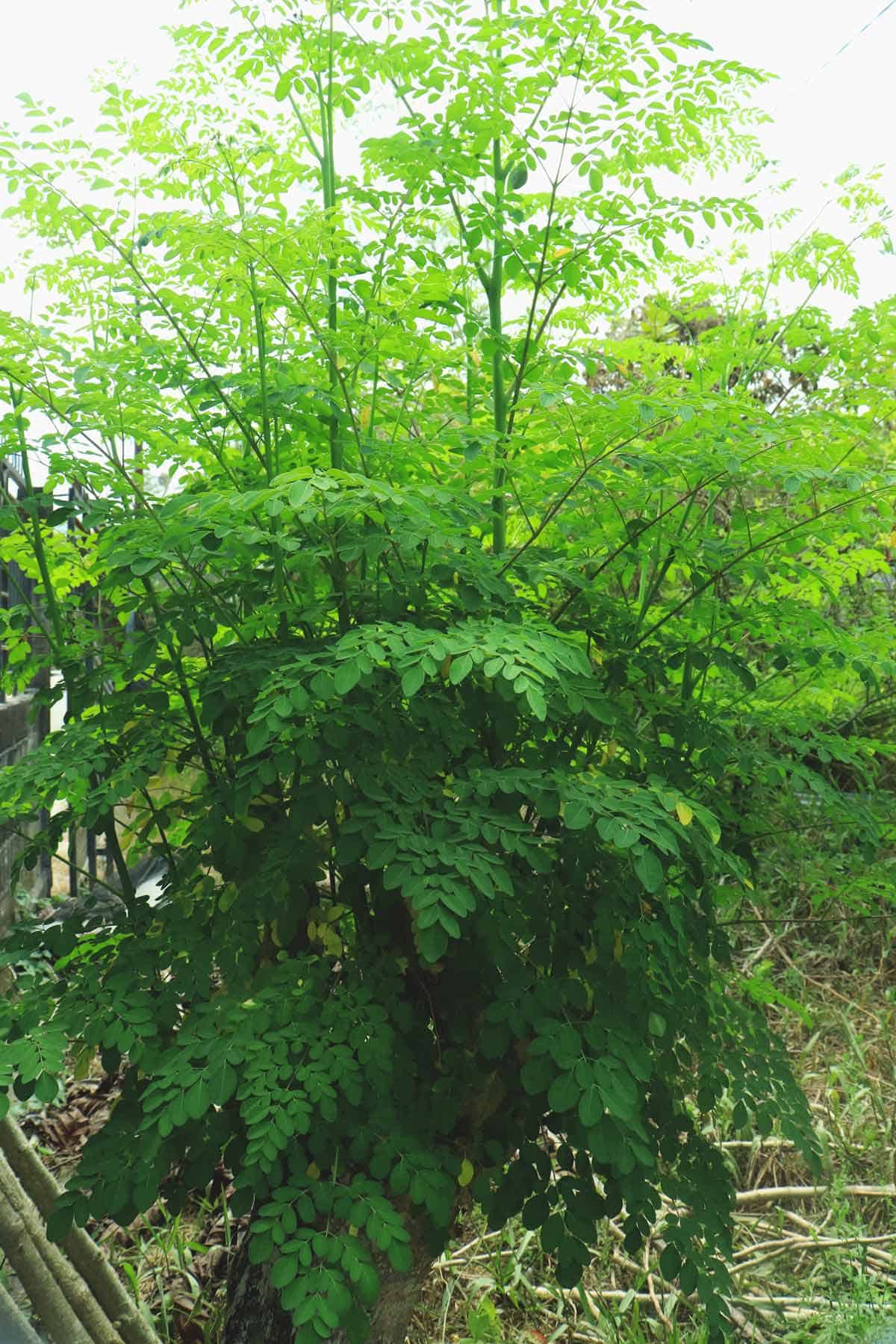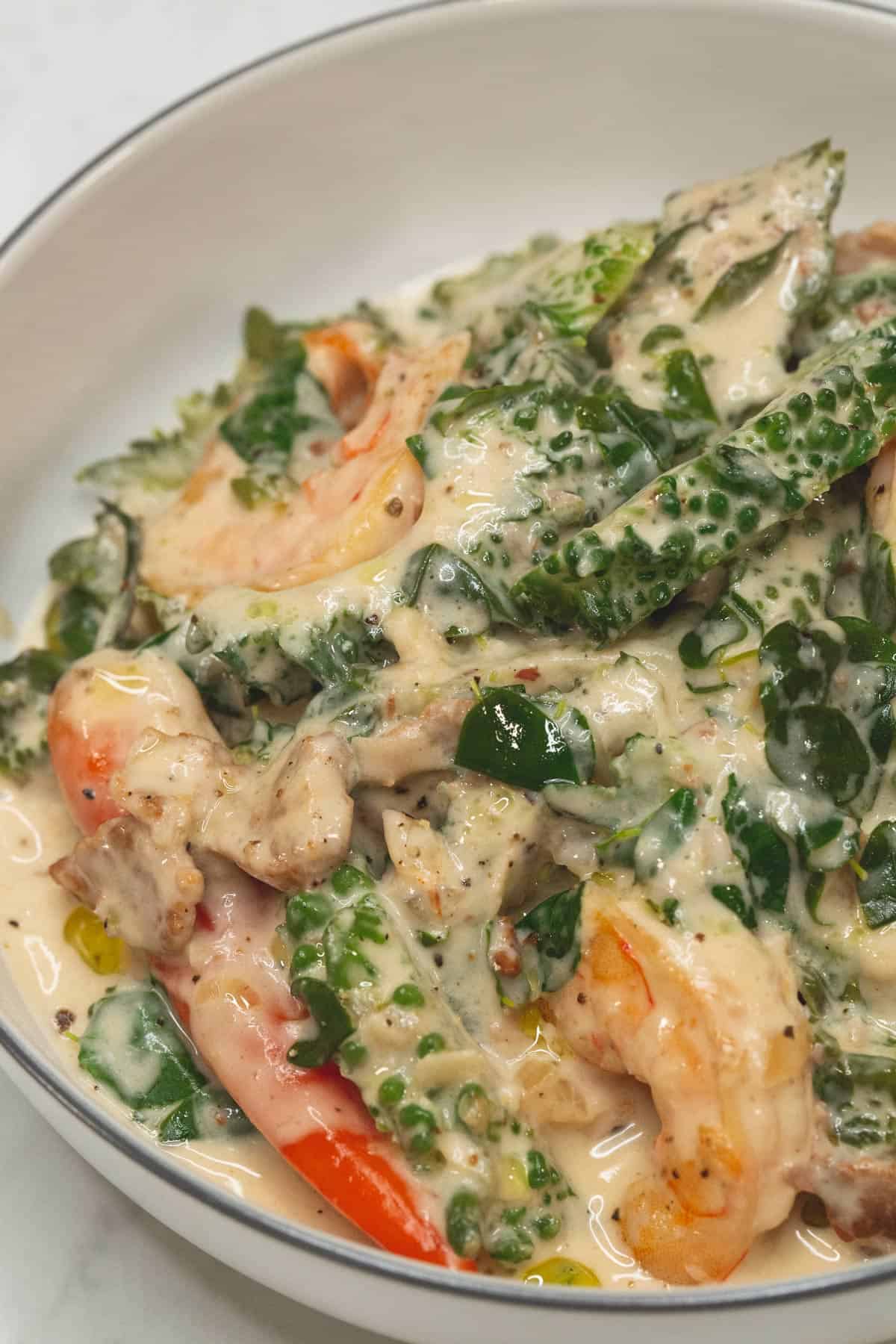Malunggay, also known as Moringa oleifera, is a well-known superfood and a favorite in Filipino cuisine. You'll find this unassuming tree in many tropical backyards. Let's explore what makes malunggay a health and wellness powerhouse.

Jump to:
What is moringa?
Moringa, also known as Moringa oleifera, goes by "malunggay" in the Philippines and is called the drumstick tree or horseradish tree in other parts of the world. It's part of the Moringaceae family and loves the warm climates of tropical and subtropical regions.
The tree is tall and slender with droopy branches. Its leaves are light to dark green arranged in a feathery pattern. It has fragrant, white or cream-colored flowers and long, green pods that look like drumsticks.
This tree is a fast grower and tough enough to survive harsh conditions, making them perfect for boosting soil quality and fighting deforestation. Many believe it to be a "miracle tree" because it's loaded with essential nutrients and health benefits.

What does malunggay taste like?
Malunggay leaves have a subtle earthy and peppery taste, with a very slight bitterness that might remind you of spinach or arugula. The flavor is not overpowering, which makes them great for many dishes.
The young seed pods (known as drumsticks) have a crisp texture similar to green beans. Once cooked, they get slightly sweet and earthy. They soften yet retain a slight crunch, like that of asparagus but with a firmer bite.

What are the health benefits of moringa?
Moringa oleifera is highly nutritious and has plenty of health benefits. Every part of the plant, including the bark and roots, is used for health-related purposes.
It is packed with a significant amount of vitamin C, vitamins A and E, minerals (like calcium and potassium), and protein. Its antioxidants, such as chlorogenic acid and quercetin, are key compounds that may lower blood sugar and cholesterol levels, as well as support brain health by neutralizing harmful free radicals.
According to Medical News Today, moringa may help prevent rheumatoid arthritis, heart disease, treat mood and nervous system disorders, treat diabetes, and prevent kidney stones. It also has potential to lower blood pressure, improve eye health, and treat anemia and sickle cell disease due to its antioxidant and anti-inflammatory properties. These properties may also be beneficial in treating an infection and reducing inflammation.
Where to find moringa
Moringa leaves are abundant in the Philippines and across Southeast Asia, often flourishing in backyards. In the US, these fresh leaves are typically available in Indian, select Asian, and other international supermarkets.
Frozen moringa leaves, sometimes labeled as "horseradish leaves," can also be found in Asian markets. The pods, known as drumsticks, are usually sold in the same international markets, particularly those carrying Indian or African products.
Moringa is also available in other forms, such as powder and tea, at health food stores and online. It is also used in traditional herbal medicine and sold as supplements or capsules, a convenient way for individuals to integrate its health benefits into their daily regimen.

Malunggay recipes
While all parts of the moringa plant (the leaves, pods, seeds, and flowers) are edible, the leaves are most commonly used in Filipino cuisine. Here are some beloved recipes with the nutritious malunggay leaves:
- Chicken Tinola: Chicken soup infused with ginger and cooked with green papaya or chayote, and sometimes malunggay leaves.
- Ginisang Munggo: A savory mung bean stew cooked with pork, shrimp, or tinapa (smoked fish).
- Pandesal with Malunggay: A twist on the classic Filipino bread roll, Pandesal, with malunggay leaves mixed into the dough.
- Ginataang Malunggay: Malunggay leaves cooked with coconut milk and aromatics, often with vegetables like ampalaya or squash.

Other ingredient guides you may like

Did you like this post? I would love to know! Your feedback helps me make better recipes. Please rate, review, or comment below. Questions about this post are welcome, too!
Let's connect on Facebook, Instagram, Pinterest, TikTok, Twitter, and Youtube. Be sure to tag me when you try any of my recipes @recipesbynora!











Dennis
Love malunggay
Nora Reyes
Amazing!